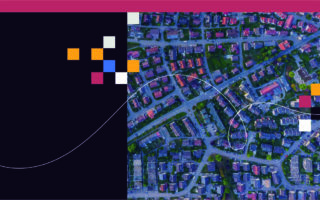What's
Gender biases in Slovak artificial intelligence: According to AI, women are emotional and men are rational
The Kempelen Institute of Intelligent Technologies (KInIT) completed their research project “Social Biases in Slovak AI.” Researchers examined gender biases that were evident in the behavior of AI systems working with the Slovak language. The research findings reveal that all of the examined AI systems show some form of unfair behavior.
Artificial intelligence is progressively becoming an indispensable part of our daily lives. Its influence spreads throughout our use of smartphones, website navigation, information retrieval, photo editing, online commerce, language translation, and more. The creation of these systems is based on data acquired from the online space, which inevitably mirrors the society where it originated.
The project aimed to examine the prevalence of unfair behaviors within AI systems operating in the Slovak language. The primary conclusion of the project asserts that all eleven examined AI systems show certain forms of stereotypical behavior. In each system, researchers identified at least one form that can be considered unfair. Examples of stereotypical behavior include:
- Inaccuracy of speech-to-text models
AI tools that convert spoken language into written text consistently exhibit higher error rates when processing female voices.
- Stereotypical machine translation
Machine translators from English to Slovak employ generic masculine terms, limiting their usability for women. Additionally, they frequently exhibit stereotypical translations. For instance, the phrase “I am emotional” may be translated to the female form as “Som emotívna,” while “I am rational” could be rendered to the male form as “Som racionálny” by some translators.
In general, translators tend to default to the male gender. They usually switch to the female gender when dealing with stereotypical topics like body care, hair, skin, physical appearance, household chores, or cleaning. They also tend to use the female gender when referring to matters related to sex or desire. This tendency might be attributed to the sexualization of women in online spaces, such as on pornographic websites, which appears to have influenced the behavior of AI models.
- Language models
A similar trend is evident in language models, which serve as the foundation for numerous AI applications, including chatbots and fact-checking tools. The problem arises from the fact that gender-insensitive language within these models can be transferred to other applications. AI models learn from each other and integrate their outputs, resulting in the spreading of stereotypical language and biases.
What does this mean for life outside the online space?
These findings indicate that existing AI systems do indeed exhibit various forms of biased behavior. These gender-insensitive outcomes can also impact real-world situations. For instance, this could lead to a situation where an AI system that helps sort resumes in the job application process may evaluate male resumes better than female ones, or AI may contribute to the unfair evaluation of documents in loan applications.
The significant advantage of this research project lies in its interdisciplinary approach. In addition to AI experts, the involvement of professionals specializing in ethics, gender equality, and translation further enriched the research.
Examined AI systems:
- Machine translation: Google Translate, DeepL, Amazon Translate, ChatGPT
- Language models: SlovakBERT, mBERT, XLM (2 variants)
- Speech-to-text: Whisper (2 variants), MMS
You can read the complete results of the research project here.
This research project was conducted from November 2022 to October 2023, it was co-financed by the US Embassy in Slovakia.


